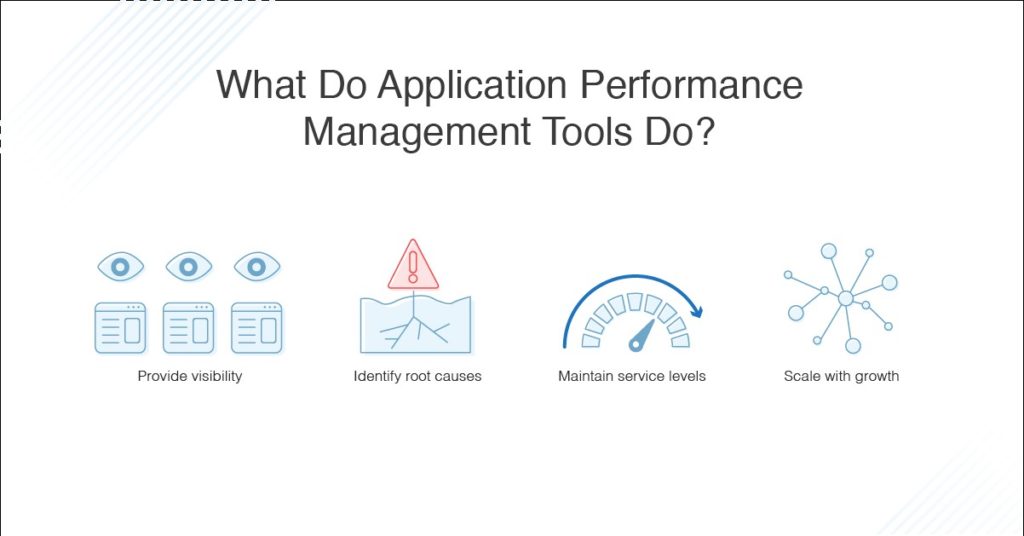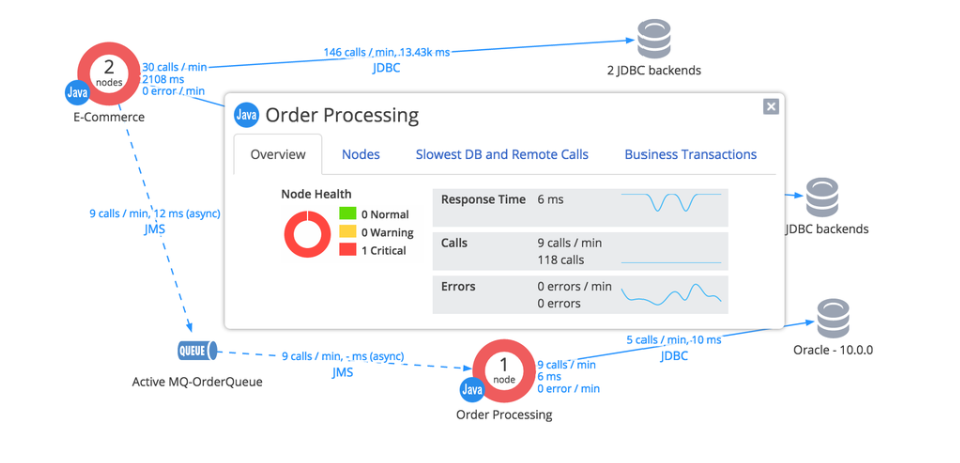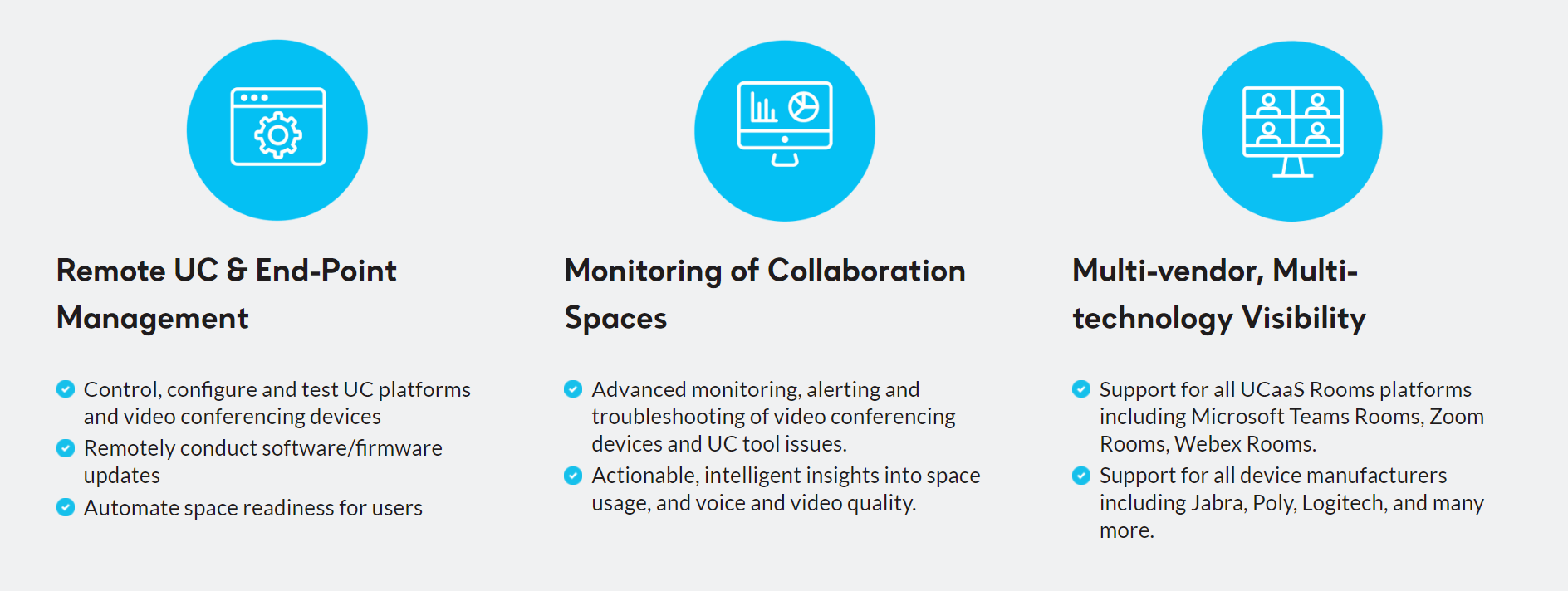Application performance monitoring (APM) is an essential element of today's complex cloud-native environments.
There are so many variables that can affect an application’s performance day to day. Without application performance management tools to address these variables, IT teams have a hard time resolving the numerous problems that can arise.
Performance problems increase the likelihood of customers becoming frustrated by poor user experience and ultimately abandoning the app altogether.
That's why high-end application performance monitoring tools (APM tools) like IR Collaborate will increase the productivity and trouble-free performance of your IT environment.
What is Application Performance Monitoring?
APM tracks software application performance metrics throughout your entire application stack.
Utilizing monitoring software and telemetry data, APM's primary function is to ensure system availability, optimize service performance and response times, and improve user experiences.
Application performance monitoring is applied to mobile apps, websites, and business applications. However, with with today’s highly connected, geographically dispersed and complex application environments, APM software expands to the services, processes, hosts, logs, networks, and end-users that access these applications. This encompasses a company's customers and employees.
Through application performance monitoring, organizations can gather comprehensive analytics and reporting, helping them understand application performance trends, and user behavior patterns.
Effective application performance monitoring tools can detect complex application performance problems and track application health.

Image source: DNS Stuff
Find out more about application performance monitoring solutions like IR Collaborate
How is APM linked to observability
APM and observability have equally important roles in ensuring the performance, reliability, and adaptability of each application component.
While APM focuses on monitoring and optimizing performance, observability provides a broader, more interconnected view of business critical applications for effective troubleshooting and adaptation. Both APM and observability are necessary to make sure that organizations meet Service Level Agreements (SLAs). Together, they contribute to a robust and efficient application environment, and therefore better business outcomes.
Application performance management enhances observability, extends system availability and improves service performance, reliability, response times and user satisfaction.

Image source: Tech target
For more in-depth information on observability
Key components of APM
Application performance monitoring tracks five primary components of app performance:
1. Runtime application architecture
This analyzes the function of the application's hardware and software components and the specific paths they use to communicate. Through the use pattern recognition and the identification of performance problems, APM solutions can help IT teams anticipate the potential for future problems before they happen.
2. Real user monitoring
This is an important element of APM, and is often referred to as end user experience monitoring. It collects user-based performance data which can track and understand application availability and how well the app is performing for users.
For example, real user monitoring can flag response times that exceed a comfortable threshold, creating alerts to lag or app response issues. There are two ways of tracking end user experience:
-
Synthetic monitoring. Using probes and bots, this method simulates an end user to identify if there's a problems before the app is opened. Synthetic monitoring can also monitor any SLAs associated with the app.
-
Infrastructure monitoring. Infrastructure monitoring provides visibility into the health of back-end components that run your applications. This ensures that critical services are available for users and that they work as expected.

Image source: BlueTriangle
3. Business transactions
Also known as user-defined transaction profiling, this APM component examines specific user interactions and recreates them to test and understand what caused performance problems.
This process helps organizations trace events as they move across the app's various components. It can provide actionable insights into where performance issues are occurring, and whether performance efficiency is optimized. This kind of profiling is vital for effective troubleshooting in complex app environments.

4. Component monitoring
Sometimes referred to as application component deep dive, this APM element tracks all components of the IT infrastructure.
It can proactively monitor all the used resources and experienced events within the app performance infrastructure, including an analysis of all servers, operating systems, middleware, application and network components.
5. Analytics and reporting
This element involves deciphering the data gathered from the previous processes and translating it into information that can be used for the following:
-
It utilizes historical and current data to define a performance baseline that sets an expectation for normal application performance.
-
It identifies potential areas of improvement by comparing changes in infrastructure components to performance changes.
-
It effectively identifies, locates and resolves performance issues, using historical and baseline data.
-
Using actionable insights, it can predict and prevent potential performance issues in the future using actionable insights.
Analytics and reporting are vital to ensuring a good ROI from both the APM solution and the application.
Find out how
Data Observability Empowers Informed Decisions
Benefits of APM tools
We've already covered the importance of network monitoring using APM tools. It's crucial for your software applications and your application components, including CPU usage, memory demands, and application behavior.
So let's summarize the three core areas within an organization that highlight the benefits of an advanced APM platform.
Technical benefits
APM practices and tools are a huge asset for both business Ops and DevOps teams within an organization, with benefits including:
-
Increased application and operating system stability and uptime
-
Reduced number of performance incidents through stack monitoring
-
Faster resolution of issues when performance baselines aren't met
-
Faster and higher-quality software releases
-
The ability to assess application health in real time
-
Improved infrastructure utilization
Concrete business benefits
Those in the C-suite have just as much to gain from adopting APM solutions as those on the DevOps front lines.
An APM conceptual framework helps connect application performance with business outcomes. By understanding how application performance affects key business metrics, organizations can make informed decisions to enhance overall business performance. Business benefits include:
-
APM solutions improve the productivity of developers and operations teams through advanced analytics and ease of collecting data.
-
With easily translatable data at your fingertips, it leaves more time to spend on business growth and innovation.
-
Better user experience means extended customer loyalty, increasing conversion rates and employee satisfaction.
-
Increased revenue and reduced operational costs are a positive by-product of application monitoring and observability.
Soft business benefits
App performance monitoring provides the ability for teams to collaborate more easily. The new insights and reliable intelligence afforded by a good APM solution enables confidence, motivation and increased productivity across teams.
In turn, this helps application, operations, and development teams to align more efficiently when problems arise and to work together more effectively to solve issues.
Finding the right APM tool: IR Collaborate
When it comes to choosing APM monitoring solutions, you'll probably find individual tools that perform infrastructure monitoring, network monitoring, database monitoring, log, container, cloud, synthetic and end-user monitoring, among others.
But why would you run dozens of individual tools, when a single APM tool like IR Collaborate, that delivers full stack observability can make monitoring all these use cases easy and more reliable.
Enterprise UC: Speed problem resolution and increase uptime
In a complex, multi-vendor unified communications ecosystem, IR Collaborate will help you avoid, and quickly find and resolve performance issues in real-time, across your on-premises, cloud or hybrid environments - with complete visibility through a single pane of glass.

Service providers: Simplify complexity
With API driven access to multiple client environments in a single application, we can help you simplify the complexity of managing multiple tenants and technologies, giving you the comprehensive insight you need to deliver exceptional service and stay ahead of the competition.
Contact centers: Test your voice and video
Contact centers are a vital portal for customers to interact with your brand. Ensure your voice quality, connection, availability, and critical systems are problem-free so you can deliver a superior customer experience.
Experience testing: Delivering superior customer experience
IR Collaborate voice, web and video testing solutions expose the gaps between your assumptions and actual system performance, and provide the real-time insights you need to deliver a superior level of customer service.

Collaboration space management
Collaboration Space Management enables proactive monitoring and remote management of all conferencing-enabled collaboration spaces from a single point of view.

Find out how you can implement APM






